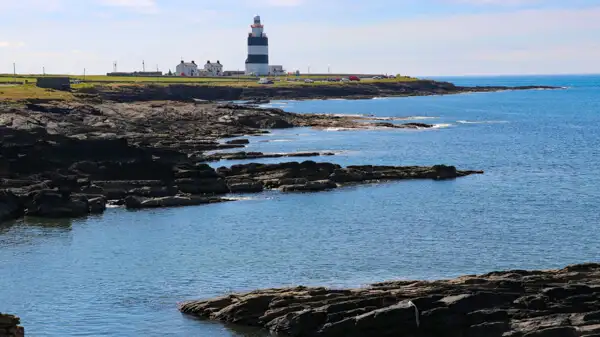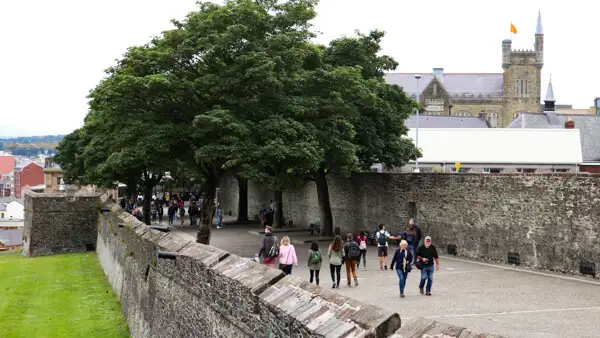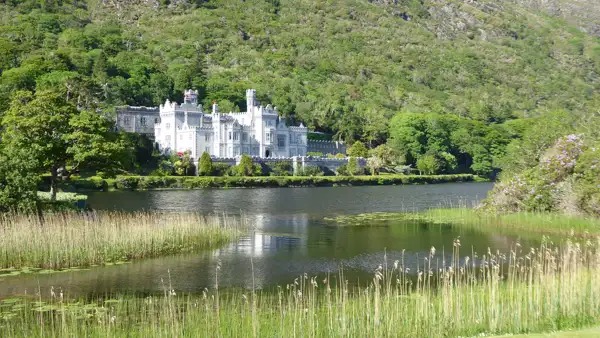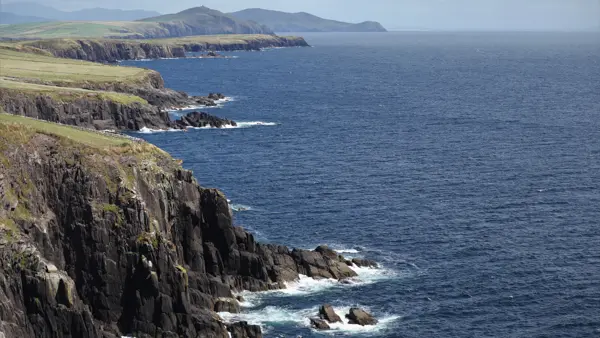You would like to go on an individual trip to Ireland but are still a little unsure?
Perhaps you would prefer a fully organized and guided package tour?
Page Contents (click line to jump the text)

Intro
No need, from our point of view Ireland is a destination that you can travel to yourself, even if you have never been to the island and your English lessons at school were a long time ago…
Why do I know this so well?
My family and I are from Germany, but have been living in Ireland (second home) for several years.
Many of our guests start their tour with a bit of uncertainty and then come back after one or two weeks completely happy, relaxed and full of beautiful holiday impressions – it was all so easy!
That’s how it should be for you, too, and that’s why I’ve summarised many of our travel experiences in Ireland to make your holiday planning easier:
Choosing destinations and the best time to travel
Before you book, wait a moment: where do you want to go, what do you want to see and when?
“Funny question – I want to see everything and of course in summer”.
If you want to go surfing, summer can be good, but maybe the best waves are in spring or autumn?
If you want to go hiking, do you prefer 20-25 degrees Celsius in high summer, or 15-20 degrees in early summer or late summer?
If you want to do a tour of the west coast, which is more important to you, warmer temperatures, or fewer visitors at the sights?
By the way, you can do a Dublin city break at any time of year, but accommodation is cheaper in the winter months. It can get chilly then, but not really cold, because the coasts in Ireland are practically frost-free.
Are you completely undecided? Then the Wild Atlantic Way, i.e. the west coast, is always the right place for you – and another night and a full day in Dublin before departure. You can do this all year round, but most visitors do their tours between May and September.

Set up your programme and choose your route
So now you know where you want to go, what you want to see and when. Then the next thing to do is to plan an approximate route. I personally like to plan with Google Maps, but you can also use a navigation app, or the good old map.
Important to know: You will be driving in left-hand traffic, which many tourists are not used to. You will often drive small, narrow and confusing roads and you will always have to take breaks to see a sight, eat, drink or take hundreds of photos.
In Ireland, the average speed of travel is very slow – much slower than most people expect. And that’s why 200-250 kilometres a day by motorbike is enough. By car, 250-300 kilometres a day is fine.
Half of the Wild Atlantic Way takes a week, the whole two weeks and once around the island takes 2-3 weeks.
The biggest mistake you can make in Ireland is to try to do too much in too short a time, then you get stressed out and cut short the most beautiful parts.
The beautiful peninsulas on the west coast, for example, should be explored at your leisure. Not all of them, but a few, because that’s where the island is at its most beautiful!
Booking flights
The programme is set, the route too, then it’s time to book. First the flights: There are many cheap direct flights to Ireland from many European airports.
We often use Ryanair, but other companies also offer cheap flights. It’s important to book well in advance, preferably in winter. If you want to book in June for July, it will be much more expensive!
Luggage can be expensive – how much do you really need? You can also buy almost everything in Ireland if you need anything else along the way.
Booking a rental vehicle
Let’s move on to the rental vehicle: Are you a motorcyclist? Then take a look at our website (www.easycruiser.tours).
If you are looking for a rental car, there are several car rental agencies at the airport or in Dublin City. But be careful with the conditions, your rental price can double quickly:
In Ireland, there is a lot of gravel on the roads and many gravelled parking spaces. Glass damage or nails and screws in the tyres are not uncommon here. Think about comprehensive insurance with glass cover and tyre puncture cover, otherwise it can be expensive in the final bill.
If you have never driven on the left-hand side of the road, a car with automatic transmission may be a good idea. Then you don’t have to shift gears with your left hand, but can concentrate fully on driving.
Book overnight stays
Again, book early! If you book at short notice in summer, it can be very expensive!
The classic types of accommodation in Ireland are hotels, guesthouses and B&Bs.
But there are also campsites, glamping sites, hostels and homestays!
You can also stay in a castle, on a boat, in a glass dome or in a tree house. If you do a little research, you can put together a great trip with lots of different places to stay.
For bookings, I usually use Booking.com or Airbnb.com myself. Both apps work very well in Ireland and are very common.

Insurance
We recommend that our guests take out travel insurance with cancellation cover.
It’s too bad if you book well in advance, all cancellation deadlines have expired and then you can’t make the trip due to illness. All the better if you can get your travel costs back from the insurance company.
Many insurance companies offer travel insurance, so you have a wide choice.
Important for entry
Ireland is in the EU, but not in the Schengen Agreement. This means that most travellers need a passport to enter the country.
German identity cards are also accepted, but even if you are German you should still bring your passport, because you will need it in Northern Ireland at the latest.
Northern Ireland is part of Great Britain and has not been part of the EU since Brexit. You will definitely need your passport to enter the country. The border between Ireland and Northern Ireland is completely open and easy to cross.

Clothing and luggage
It doesn’t rain all the time in Ireland, as some people claim, but of course it can rain sometimes. After all, we are in north-western Europe and in Germany or the Netherlands it also rains from time to time.
Umbrellas are often useless because there is a lot of wind on the island. It’s better to have a rain jacket, i.e. a membrane jacket (GoreTex) or a plastic jacket to put over your head. Done. Very simple.
One more important detail, Ireland uses 230V electricity with the English three-pin plugs. Bring a travel adapter for England, it will also fit in Ireland.
Left-hand traffic and navigation
I’ve already written a separate article on driving on the left, which I’ll link to below.
So I can keep it short here: If you’ve never driven on the left before, you’ll have to concentrate a lot at first, but you’ll soon get used to it.
Dublin is a hectic big city, but in the rest of Ireland the traffic is mostly quite leisurely and there is also much (much !) less traffic than in Germany, for example!
The traffic signs are largely self-explanatory and most intersections are well regulated.
So take heart, you can do it!

Go with the flow
Everything is organised and well planned – and then something goes wrong?
No big deal, that’s part of travelling. The Irish are very friendly and helpful and always find a solution.
Don’t you believe me? Many of our clients have told us the same enthusiastically!
So relax, take it as it comes and let yourself go to the emerald island in the azure Atlantic.
Conclusion
Travelling through Ireland is a wonderful experience: the landscapes are magnificent and especially the Wild Atlantic Way is spectacularly beautiful!
There are many medieval castles, prehistoric dolmens, beautiful towns, churches and ancient monasteries to admire throughout the country and Dublin alone offers plenty of sights.
The people are friendly, the traffic relaxed, the food and drink hearty and the plush B&Bs often mega cosy.
What have I forgotten? Oh yes, the Irish life music in the pub!
So let’s go to Ireland!
More interesting articles for you
LEFT-HAND TRAFFIC IN IRELAND – 15 THINGS YOU SHOULD KNOW FOR YOUR HOLIDAY TRIP!
CLIMATE AND TRAVEL WEATHER IN IRELAND – WHAT YOU SHOULD KNOW FOR YOUR HOLIDAY
15 TIPS FOR BOOKING ACCOMMODATION IN IRELAND
WHY GO TO IRELAND OF ALL PLACES? – 9 GOOD REASONS FOR A TRIP TO IRELAND
Photo credits cover photo: Southern coast of Dingle, Photo: Ulrich Knüppel-Gertberg (www.irland-insider.de, www.ireland-insider.com)